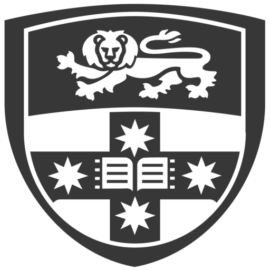Cerebral palsy interventions should be started early
When a child meets the criteria of high risk for cerebral palsy (CP), intervention should start as soon as possible, according to an international clinical practice guideline published online May 17 in JAMA Pediatrics.

Early Intervention Therapy. Cerebral Palsy Alliance Australia
Health Day May 19, 2021
Catherine Morgan PhD, from the University of Sydney, and colleagues conducted a systematic literature review to identify evidence about CP-specific early interventions for children aged 0 to 2 years across nine domains promoting motor function, cognitive skills, communication, eating and drinking, vision, sleep, managing muscle tone, musculoskeletal health, and parental support.
Based on 43 studies, the researchers identified three best-practice principles supported for the nine domains:
(1) immediate referral for intervention after a diagnosis of high risk for CP;
(2) building parental capacity for attachment; and
(3) parental goal setting at the commencement of the intervention.
Furthermore, the researchers identified 28 recommendations (24 for and four against) specific to the domains that were supported with key evidence:
• motor function (four recommendations),
• cognitive skills (two),
• communication (seven),
• eating and drinking (two),
• vision (four),
• sleep (seven),
• tone (one),
• musculoskeletal health (two), and
• parent support (five).
“It is critical that early intervention for CP starts at diagnosis and the associated impairments are monitored and treated according to recommendations,” the authors write.
 Source Health Day via Medical Xpress
Source Health Day via Medical Xpress
| References |
Early Intervention in Cerebral Palsy and Beyond, Tebani A, Marret S. JAMA Pediatr. 2021 May 17. doi: 10.1001/jamapediatrics.2021.0884. Epub ahead of print.
| Further reading |
Early Moves: a protocol for a population-based prospective cohort study to establish general movements as an early biomarker of cognitive impairment in infants, Elliott C, Alexander C, Salt A, Spittle AJ, Boyd RN, Badawi N, Morgan C, Silva D, Geelhoed E, Ware RS, Ali A, McKenzie A, Bloom D, Sharp M, Ward R, Bora S, Prescott S, Woolfenden S, Le V, Davidson SA, Thornton A, Finlay-Jones A, Jensen L, Amery N; Early Moves Clinical Working Group, Valentine J. BMJ Open. 2021 Apr 9;11(4):e041695. doi: 10.1136/bmjopen-2020-041695. Full text
Consensus of physician behaviours to target for early diagnosis of cerebral palsy: A Delphi study, McNamara L, Scott KM, Boyd RN, Novak I. J Paediatr Child Health. 2021 Feb 8. doi: 10.1111/jpc.15369. Epub ahead of print.
Sensitivity and specificity of general movements assessment for detecting cerebral palsy in an Australian context: 2-year outcomes, Goyen TA, Morgan C, Crowle C, Hardman C, Day R, Novak I, Badawi N. J Paediatr Child Health. 2020 Sep;56(9):1414-1418. doi: 10.1111/jpc.14953. Epub 2020 Aug 7.
The effect of interactive computer play on balance and functional abilities in children with moderate cerebral palsy: a pilot randomized study, Pin TW, Butler PB. Clin Rehabil. 2019 Apr;33(4):704-710. doi: 10.1177/0269215518821714. Epub 2019 Jan 2.
State of the Evidence Traffic Lights 2019: Systematic Review of Interventions for Preventing and Treating Children with Cerebral Palsy, Novak I, Morgan C, Fahey M, Finch-Edmondson M, Galea C, Hines A, Langdon K, Namara MM, Paton MC, Popat H, Shore B, Khamis A, Stanton E, Finemore OP, Tricks A, Te Velde A, Dark L, Morton N, Badawi N. Curr Neurol Neurosci Rep. 2020 Feb 21;20(2):3. doi: 10.1007/s11910-020-1022-z. Full text
Effect of combining passive muscle stretching and whole body vibration on spasticity and physical performance of children and adolescents with cerebral palsy, Tupimai T, Peungsuwan P, Prasertnoo J, Yamauchi J. J Phys Ther Sci. 2016 Jan;28(1):7-13. doi: 10.1589/jpts.28.7. Epub 2016 Jan 30. Full text
Fatigue in the mothers of children with cerebral palsy, Garip Y, Ozel S, Tuncer OB, Kilinc G, Seckin F, Arasil T. Disabil Rehabil. 2017 Apr;39(8):757-762. doi: 10.3109/09638288.2016.1161837. Epub 2016 Mar 25.
Child and youth experiences and perspectives of cerebral palsy: a qualitative systematic review, Lindsay S. Child Care Health Dev. 2016 Mar;42(2):153-75. doi: 10.1111/cch.12309. Epub 2016 Jan 11.
Musculoskeletal system problems and quality of life of mothers of children with cerebral palsy with different levels of disability, Kavlak E, Altuğ F, Büker N, Şenol H. J Back Musculoskelet Rehabil. 2015;28(4):803-10. doi: 10.3233/BMR-150588.
An exploratory study investigating the multidimensional factors impacting the health and well-being of young adults with cerebral palsy, Sienko SE. Disabil Rehabil. 2018 Mar;40(6):660-666. doi: 10.1080/09638288.2016.1274340. Epub 2017 Jan 9.
Parents’ experiences with physical and occupational therapy for their young child with cerebral palsy: a mixed studies review, Kruijsen-Terpstra AJ, Ketelaar M, Boeije H, Jongmans MJ, Gorter JW, Verheijden J, Lindeman E, Verschuren O. Child Care Health Dev. 2014 Nov;40(6):787-96. doi: 10.1111/cch.12097. Epub 2013 Aug 13.
Impact of an educational program on parental knowledge of cerebral palsy, Karande S, Patil S, Kulkarni M. Indian J Pediatr. 2008 Sep;75(9):901-6. doi: 10.1007/s12098-008-0160-0. Epub 2008 Sep 22.
Determinants of functioning of adolescents and young adults with cerebral palsy, Donkervoort M, Roebroeck M, Wiegerink D, van der Heijden-Maessen H, Stam H; Transition Research Group South West Netherlands. Disabil Rehabil. 2007 Mar 30;29(6):453-63. doi: 10.1080/09638280600836018.
The effects of early motor intervention on children with Down syndrome or cerebral palsy: a field-based study, Mahoney G, Robinson C, Fewell RR. J Dev Behav Pediatr. 2001 Jun;22(3):153-62. doi: 10.1097/00004703-200106000-00001.
